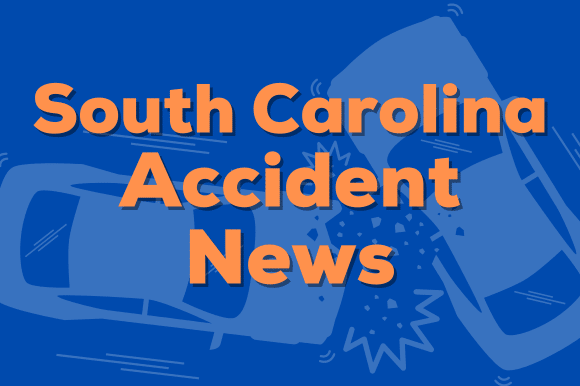In summary
Inland Empire high school students have a higher graduation rate than their peers in California but are below average when it comes to enrolling in college.
Inland Empire students graduate at slightly higher rates than their peers in other parts of California. So why do they lag in college enrollment and graduation?
A report by the Public Policy Institute of California looked at why Inland Empire students fall behind and what educators can do to get more students on the college track.
“You have the lowest college-educated but our county has the highest (high school) graduation rates,” Catalina Cifuentes, executive director for college and career readiness with the Riverside County Office of Education said in an online forum of the report. “So our students are very capable, but it’s that connection between information and putting it into practice.”
About 88% of Inland Empire high school students graduate from high school, compared to 86% statewide, the report found. But the numbers flip after that.
It starts with the coursework needed to attend a Cal State or University of California campus, known as A-G requirements. While some school districts require the state minimum for high school graduation, others call for extra courses in subjects such as math or foreign languages, so all graduates are college-ready.
Throughout Riverside and San Bernardino County, 48% of students complete the A-G requirements. Statewide 60% of high school graduates meet those standards.
Without those classes under their belts, students have to play catch-up before entering a state university. As a result, just 57% of Inland Empire graduates attend college, while 65% of high school graduates throughout the state pursue higher education.
Most Inland Empire students start higher education at community colleges. But just 31 percent of those students transfer to a four-year school do so within six years, compared to 40 percent statewide.
That adds up to lower college graduation rates. A quarter of Inland Empire residents ages 25 to 54 hold a bachelor’s degree, compared to 41 percent of Californians in that age range.
The regional economy plays a part in that gap. Wages in the Inland Empire are almost 40% lower than the state average, the report found. But key sectors in the region pay better than minimum wage without college degrees, attracting high school graduates to jobs with solid paychecks but limited career potential.
“In the past decade, most job growth in the Inland Empire has been driven by transportation, logistics and healthcare industries and most workers in these industries do not have or need a college degree,” said Kevin Cook, a policy researcher with the Public Policy Institute of California.
Those jobs became a draw during the pandemic, when many students graduated without clear direction, university administrators told CalMatters.
Professional jobs still pay better than those, but the trade-off between educational investment and returns isn’t always clear to students and their families, he said.
“The lack of clear pathways from college to a career, the cost associated with attending college and the fact that returns to a college degree, although significantly higher than just a high school degree, might take years to come to fruition and that can be generally discouraging to students and their families,” Cook said.
Moreover, speakers said, the region is huge, with 4.6 million people and a geographic area bigger than most states.
“The size and scale of the region and unique population and cultures within it, means developing a single set of policies to improve college outcomes is difficult,” Cook said.
In the past parents were skeptical about the need for a college degree, Cifuentes said, but recently some seem hostile. Parents tell her: “You just want to get my child into loan debt. You just want them to be a socialist.”
“They’re taking information in bits and pieces and making judgments about higher education that have nothing to do with education, quality of life, or getting a high paid job and health benefits,” she said.
To counter that, she said parents need more accurate information and “college enrollment and admissions really has to be a family decision.”
There are several things schools can do to boost college enrollment, the report found.
Starting college preparation early is key, experts said. CalMatters reported on the Middle School Initiative at UC Riverside, which introduces seventh graders to the university.
If high schools align graduation requirements with California’s A-G standards, students will finish high school college-ready, speakers said. That might just mean adding one more math class or an extra year of foreign language.
Dual enrollment, which allows high school students to take some community college classes can also move the needle, by allowing students to get a jump on college coursework while completing graduation requirements.
And helping students complete college registration and financial aid applications during the school day, rather than offering optional after hours appointments, can spur more students to apply for college, Cifuentes said.
“We can control it when the students are with us,” she said. “We’re already seeing immediate returns on that. We got over 23,000 more students so far already committed to CSU than in the past. But we did that all during the school day.”
Imperial County wants to halt solar farm development
Imperial County farmers are fighting to keep agricultural land in production as the state pushes to build solar farms, CalMatters’ Dan Walters reported.
The Imperial Irrigation District called for a halt to the conversion of agricultural fields into solar panel farms early this month. With more than 13,000 acres of fertile land already converted, the water district asked the Imperial County Board of Supervisors to protect productive farmland.
The conflict illustrates the state-wide decline in agricultural land, which declined by more than 1.6 million acres between 1984 and 2018. Some of that land has gone to solar farms, to meet state mandates for alternative energy sources.
California’s nearly $60 billion farm sector produces a third of the country’s vegetables and over three-quarters of the country’s fruits and nuts, according to the California Department of Food and Agriculture.
False ICE reports spread fear
As ICE crackdowns disrupt the Inland Empire and other parts of California, mistaken reports of immigration action are causing chaos, the Press Enterprise reports.
Community groups have posted warnings of suspected ICE raids, ranging from a white law enforcement van at a Riverside McDonalds to officers in an SUV at a Jurupa Valley tire shop, as. But in those cases they got it wrong.
There’s often confusion between immigration action and other law enforcement activity, and many alerts are well-intentioned but false. Others are malicious attempts to get attention or scare people, a political organization representing Mexican Americans stated. That can keep people from work, school and other daily activities.
While you are here, please sign up for the Inland Empire newsletter and let me know what kinds of stories you’d love to read.
And please add my email to your contacts: [email protected]
This post was originally authored and published by Deborah Brennan from Cal Matters via RSS Feed. Join today to get your news feed on Nationwide Report®.




























